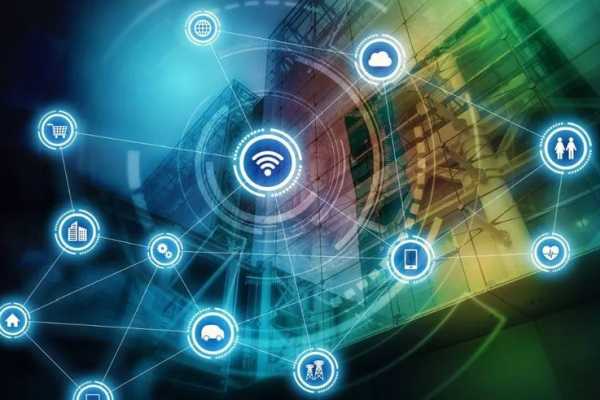Published on the 10/07/2019 | Written by Jonathan Cotton

Is this the final piece of the IoT/cloud tech puzzle?…
As the great global digital transformation rolls on (and as our ability to produce data climbs to ever greater heights) ‘edge computing’ – that is the collation, processing and analysis of data at the source of generation – represents a significant shift in the way we think about network operations.
It makes sense: Edge computing seems to offer a holy trinity of lower latency, free bandwidth and better security, and might just revolutionise industries as disparate as manufacturing, transport, telecommunications and government.
“Since the early 2000s, the rise of cloud-based services led the IoT sector to assume that cloud would play a pivotal role as the central hub to store and analyse all IoT data,” say Juniper researchers in a new whitepaper from the research company entitled How AI & Machine Learning are Advancing Edge Processing.
“However, as many increasingly connected IoT devices, networks and services generate significant amounts of data, information retrieval from the data centre has not been suitable for applications that have to process data and/or deliver intelligent decision making in real-time.
“Edge will be the growing frontier of IT managing latency, bandwidth, data privacy and autonomy.”
“This, in turn, has led industries to utilise edge computing.”
It’s this growing need – to collect, process and analyse the large volumes of data being generated at the ‘edge’ of networks – that’s driving edge computing’s market growth.
“An edge application makes effective use of the IoT devices’ processing power to aggregate, score and filter the IoT data,” says market researcher Grand View. “At the same time, it also utilises the flexibility and power of the cloud to execute complex analyses of the data and contributes to the decision-making process.”
By segmenting data into that which is significant at the point of production from that required in more centralised decision making processes, edge computing rationalises the relationship between IoT technology and the cloud.
“Subsequently, IoT devices get a major role to play as the data analysis takes place around these devices. This technology analyses the data at the edge of the network and facilitates quick decision-making. It fulfills the local computing needs by processing the data at the micro data centers rather than sending it to the main centre.”
This ‘division of labour’ has huge potential for freeing up network bandwidth, and the infrastructure of the future will span private and public clouds and edge technology, Gartner says.
“As cloud computing becomes mainstream, public and private cloud are driving digital business,” says Gartner. “However, the volume and velocity of data generated from sensors and IoT endpoints is also forcing CIOs and IT leaders to deploy edge computing to process data closer to the source of data generation, ‘things’ and users.”
According to the company around half of all large organisations will be integrating edge computing principles into their projects by 2020.
“CIOs can use cloud computing as a style of computing to create a service-oriented model and a centralised control and coordination structure,” says Santhosh Rao, senior director analyst at Gartner.
“They can use edge as a delivery model to distribute aspects of the cloud service to operate in a distributed or disconnected way. In addition, some CIOs are using edge topological ideas to cut WAN costs by half, while improving resiliency and improving user experience by 200 percent.
“Edge will be the growing frontier of IT managing latency, bandwidth, data privacy and autonomy,” he adds.
Globally, Siemens, Bosch and AWS lead the market poised for massive growth in the immediate future – a staggering US$11.2 billion is predicted to be spent on edge computing in 2024 (up from an estimated $1.3 billion in 2019) – an average annual growth of 52.9 percent.
Juniper research author, Elson Sutanto explains: “Edge Computing and 5G, supported by continued advancements in machine learning and AI-derived algorithms, will continue to be the key drivers of big data analytics and complex real-time analysis at the edge of networks.’’
And nowhere is that growth destined to be more significant than the Asia/Pacific region.
“The market in Asia Pacific is anticipated to register the highest [compound annual growth rate] from 2019 to 2025,” says Grand View.
“The technology is still in its nascent stages of adoption in the region due to the lack of supporting infrastructure and because organisations are primarily using micro data centers as a preventive measure against data loss.
“However, government initiatives to encourage digitalisation and roll out advanced infrastructure are expected to drive the market in the coming years.”
And with Nokia predicting 5G internet network speeds as high as 10Gbps, analysts are predicting that IoT and 5G will develop together as low latency connections enable new applications.
“In remote locations, where network connectivity is a challenge, [edge computing] also helps in reducing the latency. 5G networks and edge technology often complement each other as network providers cannot deliver the benefits associated with the 5G standards without leveraging edge computing.
“Moreover, with the help of this technology, network providers can also move their IT resources and centralised data centers to nearby base stations and other facilities closer to the end user.”



























